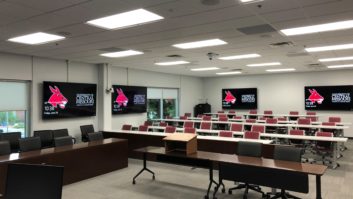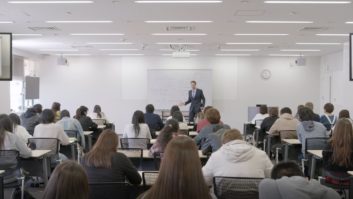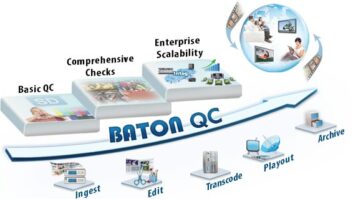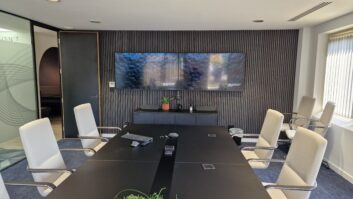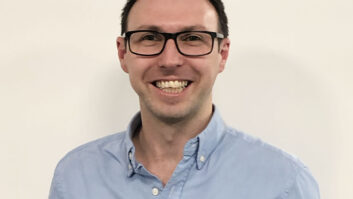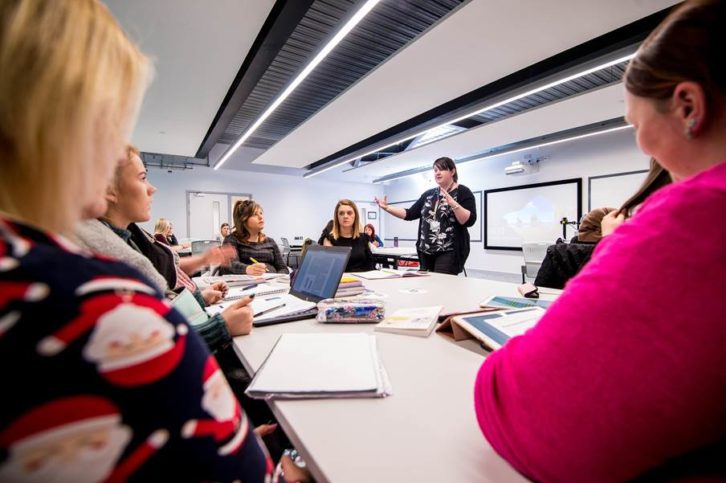
The University of Wales Trinity Saint David (UWTSD) has announced a trial of the intelligence-powered Sony REA-C1000 Edge Analytics Appliance with a view to expanding later in the year.
As part of its existing relationship with Sony, this new trial will allow UWTSD to evaluate the transformative potential of Artificial Intelligence (AI) and video analytics across different departments.
The REA-C1000 uses AI technology to create impactful video presentation content that is said to empower presenters, captivate audiences and transform the quality of communication like never before.
The purpose of the trial is to help UWTSD staff and students experiment with the powerful features of the appliance, develop new workflows and lesson styles. The trial will also uncover new use cases and create inspiring video content for the following scenarios and departments:
- Real-time capture and digitisation of diagrams and complex equations in mathematics, physics and engineering classes via the Handwriting Extraction feature
- Handwriting Extraction technology provides an augmented reality overlay of whiteboard content, even if the speaker is standing directly in front of the board. Meanwhile, remote viewers or those playing back a presentation later have clear, digitised copies of whiteboard content that may otherwise be hard to see.
- Seamless and straightforward creation of high-quality distance and remote learning materials
- UWTSD staff can use the pan-tilt-zoom auto-tracking features, which ensure a presenter is always in focus and in frame throughout a presentation, even as they move around the stage, without the need for a dedicated camera person.
- Creation of engaging materials for humanities and media students and staff
- Media students can use the chroma key-less CG overlay when creating video content to remove the need for a dedicated studio or green-screen. It can also add supporting graphics, animated imagery or backdrops to presentations in real-time.
“Staff have been blown away by the potential of the Edge Analytics Appliance to drive engagement and boost successful learning outcomes so far,” commented Lyndon Shirley, executive head of technology-enhanced learning at the University of Wales Trinity Saint David.
“It’s a truly intuitive and natural solution, which means we can adapt to any style of learning or teaching dependent on the subject at hand. At the same time the technology simultaneously broadens the applications of our learning spaces.”
The university’s vision is to create a learning-centred neighbourhood where collaboration and partnership are the key drivers for teaching, learning and innovation. Together with its partners, UWTSD is developing new provisions to address skills gaps, creating enterprise hubs and accelerator schemes to grow new businesses, developing the skills of current businesses and attracting new investment into the region.
Meaningful training linked to real career opportunities while achieving a postgraduate award is a tangible expression of the skills-pipeline at the heart of all its campuses, where UWTSD is committed to developing creative, skilled and employable graduates.
Alexandra Parlour, corporate and education marcomms manager at Sony Professional Solutions Europe, added: “UWTSD is always boldly and ambitiously rethinking its teaching and learning models. This trial is testament to the university’s commitment to putting video at the heart of the classroom, which is crucial for engaging today’s and tomorrow’s students. The AI-powered Sony REA-C1000 Edge Analytics Appliance offers clear benefits, and we are looking forward to collaborating further with UWTSD throughout 2020 to unlock its full potential.”
Alongside the Edge Analytics Appliance trial, UWTSD is continuing its broader roll out of Sony TEOS with the goal of covering the vast majority of its 260 learning spaces in the next five years, at a rate of 40 new rooms every year.
